|
FINDINGS
In light of the evidence before us, as
summarized in the previous section, we may render our
findings. The People's Tribunal finds that indeed food
scarcity is widespread and serious in Burma today.
Provisionally, we find Burma to be militarized, and that a
causal nexus links militarization to food scarcity. This
section of the report details why we arrive at these
conclusions.
 On the Right to Food On the Right to Food 
| The right to food, as defined by
the International Bill of Rights, has been denied to
a large but unknown number of people. As explained in
the scope of the Tribunal, the right to food invests
certain positive obligations in all sovereign states.
Burma has never ratified the relevant international
legal instruments, but this failure to publicly
accede diminishes neither the validity nor the
universality of the concepts they represent. In fact,
the Government has committed itself to them in its
own public statements. |
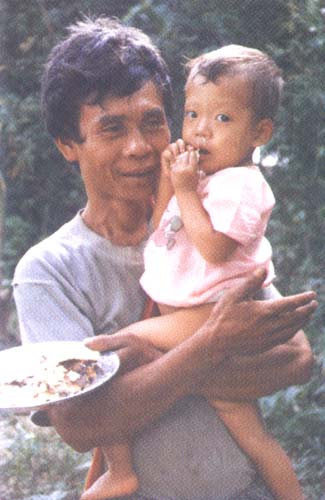
Picture 36: "They fed what they had to the
children, and the adults fasted."
|
 The Right to Work The Right to Work 
The evidence consistently and convincingly
illustrated that the state prevents people from working to
achieve food security. Farmers are prevented from using their
land, water and other natural resources to provide sufficient
food. They are not free to choose when, how and what to
cultivate. They are not free to devote their own labor to
food security. Communities in armed conflict zones are
prevented from using their labor, land and natural resources
to achieve food security. Farmers in non-conflict zones are
compelled to appease the state first, and feed themselves
second. Regardless of their own economic well-being, farmers
and others are required to provide goods and services to
state institutions, especially the army.
State rhetoric conflicts diametrically with
reality, but what Burma’s government says about food
security demonstrates an awareness of its obligations. For
example, in March 1998 the government reported to the World
Food Summit, an intergovernmental conference, that "The
Government of Myanmar remains totally pledged to the
achievement of food security for all. 1" The report outlines a series of commitments
conforming to the Summit’s Plan of Action:
| "The
Government of Myanmar remains totally pledged to the
achievement of food security for all." |
Commitment
One: We will ensure an enabling political,
social, and economic environment designed to create
the best conditions for the eradication of poverty
and for durable peace... which is most conducive to
achieving sustainable food security for all... Commitment Two:
We will implement policies aimed at eradicating
poverty and inequality and improving physical and
economic access by all, at all times, to sufficient,
nutritionally adequate and safe food and its
effective utilization...
|
To pursue
poverty eradication, among both urban and rural poor and
sustainable food security... the Government have laid
down agriculture sector policies as follows:
- Free choice
of crop production
- Provision of
right to cultivate to those who develop new
agriculture land or who are cultivating the land
- Provision of
land ownership to the perennial crops growers, as
long as they are producing commercially...
The Tribunal finds that despite these
commitments to ensuring farmers’ rights and food
security, the government consistently undermines its own
stated goals and obligations. The evidence shows that in
civil war zones farmers are simply denied the right to
cultivate. Farmers in eastern, central and lower Burma who
would prefer to plant beans and pulses, relatively quota-free
crops, are nevertheless compelled to grow paddy. The
government prescribes land for rice production and
confiscates land from farmers who do not grow paddy. We find
that these policies negate farmers’ self sufficiency,
deny their right to work and deprive them of food.
 Paddy Procurement Paddy Procurement 
| The law empowers Burma’s
government to purchase for redistribution or resale a
percentage of all paddy. A compulsory nationwide
program conducted by a government agency, buying
substantially below market price, it is effectively a
crop tax. The rationale for the low price paid, about
half of market value, is to feed the armed forces and
provide discounted rice to civil servants.
Furthermore, MAPT exports paddy earning foreign
currency. |
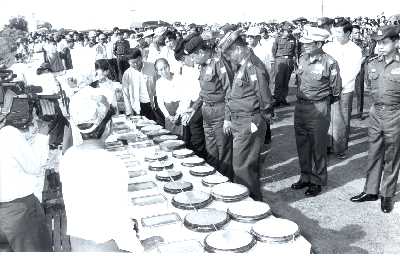
Picture 37: In practice, the government denies rice
to the very people who grow it
|
Despite its theoretical merits, the paddy
quota fails to promote food security. In practice, the
government denies rice to the very people who grow it, people
who don’t have enough to eat. Hungry farmers grow rice,
but the State takes it away without otherwise providing for
their food security. This is severe injustice.
The paddy quota is inherently unfair,
unrealistically and inflexibly assessing how much rice
farmers can spare. Furthermore, through this coercive system
the government pays little for rice destined to bring high
profits in overseas markets, with no commensurate payment to
farmers whatsoever. Corruption and quota pressures mean
sometimes farmers must sell even more paddy than calculated.
Agents subtract moisture content, and thus demand greater
volume. Farmers have little choice but to accept these
adjustments. In addition to the MAPT quota, local authorities
compel farmers to sell more rice at MAPT prices. This
black-market quota may amount to several percent of paddy
production. In remote areas, the army conducts virtually all
paddy procurement, arbitrarily and with force.
It appears that this system is a major
cause of inflation in Burma’s economy. Expensive rice
means higher costs for all food, and rural and urban people
alike can not feed themselves adequately. Given the uniform
evidence detailing how paddy procurement siphons rice from
rural households, and the economic hardship this system
creates for farmers, the Tribunal judges it a significant
factor in food scarcity
 Forced
Labor Forced
Labor 
Forced labor has been Burma’s most
widely documented and roundly condemned human rights
violation.2 To maintain our scope of
inquiry, we will confine this discussion to forced
labor’s relationship with food scarcity. In a word, the
State’s demand for compulsory, uncompensated labor
denies the right to food.
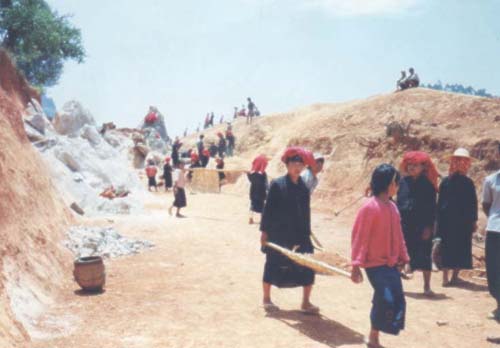
Picture 38:"My oldest daughter, who is eleven,
always went to do forced labor while we parents looked
for food."
|
Under threat of violence, civilians
must work on roads, railways, dams, military
installations and a variety of other infra-structure
projects. Typically, local authorities (civil servants in
non-civil war zones, the army elsewhere) send an order to
village leaders specifying the time, place and nature of
the work, as well as the number of people required. It
could be for one day or one month. Often the order is to
recruit one worker from each household. People unwilling
or unable to work may find a substitute or pay a cash
fine. |
Witnesses testified to the economic
hardship incurred by this inflexible, time-consuming and
sometimes dangerous work. Conditions of forced labor vary
throughout the country. Once again, the difference depends on
war zones. Portering for the army, minesweeping and serving
military installations increase worker risks. Several porters
attested to being underfed, neglected and abused. Wherever
forced labor takes place, it affects agriculture, household
income and food in three ways. First, it reduces the amount
of time and energy people spend in productive work to feed
themselves. Second, it extracts cash from households. Last,
the actual work forces people to face hunger.
Forced labor is a common practice with
severe repercussions on household economy and food scarcity.
The evidence before the Tribunal from a variety of sources
indicates that it is a major drain on Burma’s rural
economy and a significant cause of food scarcity.
 Counter-insurgency Counter-insurgency 
| Nowhere does the state deny food
more blatantly than in combat zones. The Tribunal
finds the counter-insurgency program to have
absolutely decimated food security in and around
combat zones. The strategy is simple but effective:
stop food, funds, recruits and intelligence from
reaching insurgents by severing ties between
guerrillas and civilians. Since the guerrillas
generally operate in small mobile units, the Four
Cuts fall on rural villages in six ways. |
Arbitrary
and severe violence has destroyed countless rural
villages, scattering people throughout the jungles. |
The Army
Destroys Food and Crops
Military operations in the civil war zones
target the rural food supply. Apparently, the army’s
justification is that this food, or some portion of it, is in
fact being supplied to insurgent forces, and therefore must
be withheld. The army does attempt to distinguish between
food intended for civilian consumption and food allegedly
destined for the rebels. Instead, the army targets crops
which provide the local food supply, in fear that if
harvested, this rice would feed guerrillas. Tilling the soil,
planting, tending fields, harvesting—all phases of
agriculture are subject to attack.
The Army
Displaces Civilians
Arbitrary and severe
violence has destroyed countless rural villages, scattering
people throughout the jungles. Where the army conducts
intermittent raids but has no permanent bases, civilians may
choose to remain in or near their villages, hiding when
soldiers approach. Familiar with the local terrain, hunting
conditions and edible plants, native inhabitants attempt to
survive despite the loss of their homes and farms. The Four
Cuts have thus created a phenomenon of internally displaced
people (IDPs), living with perpetual food scarcity.
The Tribunal finds that the severest cases
of food scarcity, including reports of starvation, occur
among IDPs made homeless by the military strategy.
Furthermore, this sector of Burmese society has the fewest
alternatives when facing a food crisis. The army’s
presence makes travel hazardous, even when people cross the
border into Thailand as refugees.
The Army
Relocates Villages
| Relocating human
settlements is a major element of the strategy,
uprooting hundreds of thousands—perhaps
millions—of people over the years and in many
cases devastating the rural economy. This is coerced,
involuntary relocation, enforced by the army.
Typically, a village either receives written order or
a visit by military officers, who command it to move.
|
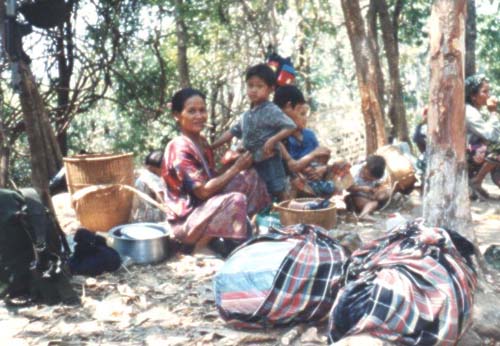
Picture 39: "They told us troops in the hills
have orders to kill anything they see. We are haunted
by this."
|
The Tribunal found that some areas, such as
the eastern Pegu Yoma mountains, have known strategic relocation for
nearly three decades. Major forced relocation in Pegu
Division began in the 1970s, when hill villages were moved
close to army posts, and numerous restrictions were placed on
travel out of the relocation sites. In 1979, one hundred
refugees from Thaton district crossed over the Thai/Burmese
border and became the first group of Burmese refugees to
enter Thailand. 3
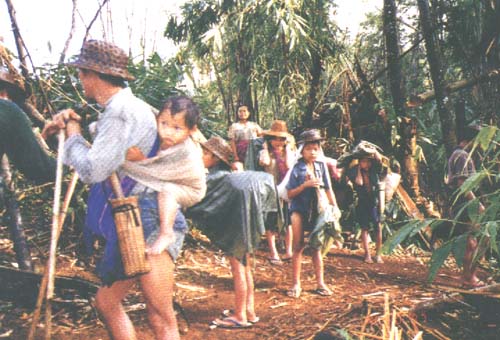
Picture 40: "This year we ran from the army four
times."
|
But forced relocation is not
confined to any one region; it happens wherever the
army faces the threat of insurgency. One of the most
comprehensive and damaging forced relocations ever is
currently underway in the Shan State, where over
300,000 people have been moved for strategic
purposes.4
At the relocation sites villagers are called on to
work for the Burma army, such as building stockades,
doing chores at army posts, guarding roads, building
railroads serving as porters, and a variety of other
tasks the local military designates. However, many
people ordered to relocate do not move to the new
sites. They may migrate to cities and become hired
workers. |
We find that relocation has profound
effects on food security. Moving people cuts them off from
their land and natural resource base, subsistence
farmers’ lifeline. The military neither compensates
people for these losses nor designates new land. In the words
of a Tatmadaw officer explaining relocation to villagers,
"This is military rule… you stay where we tell you
to stay." 5
Furthermore, food is tightly restricted in
relocation centers, depending on the army’s perception
of insurgent threat and whether rations actually exist.
Relocation creates serious long-term food scarcity, rather
than seasonal hunger arising from military incursions or
heavy taxes at harvest time. A relocated family has lost its
land, and with it the children’s future security in the
rural economy. Economically, they must begin again, often
starting from zero.
The Army
Expropriates Cash and Materials
| Relocated or not, people must
provide cash, goods and services to local military
authorities. Refugees sometimes cite these
unrelenting and excessive demands as reasons why they
left. Although witnesses call it taxation, there is
no connection to any national revenue or excise
department. Quite to the contrary, it is an ad hoc
practice serving military needs, and individual
soldiers’ arbitrary and sometimes capricious
demands. Construction materials, food, livestock,
liquor and virtually any other items are expropriated
or taxed in this way. The army has also made
civilians responsible for security by threatening
heavy fines for any local rebel activity. The
military promises economic ruin for any village
tolerating guerrilla action. |

Picture 41: "This is military rule… you
stay where we tell you to stay." |
 On Militarization On Militarization 
The Tribunal recognized prima facie that
Burma has a military government and that the army is
prominent in national affairs. These facts of militarism were
never in doubt, but nonetheless have been amply demonstrated
in our foregoing discussions on the right to food. Our
inquiry does, however, assess militarization as
defined in the scope: military ideology, values and social
structures pervading and dominating the economic, social and
political life of the country. Militarism describes an army
pursuing its conventional role with much vigor;
militarization describes the pursuit and capture of all
society.
| We can not study this
problem’s complexity solely by surveying food
scarcity. One would have to define Burma’s
military institutions, their history, activities,
structure and philosophy, then examine in detail
their social, cultural and psychological effects. One
would need to examine how military ideology is
propagated through folklore, education and mass
media. Ideally, one would interview military
officers, rank-and-file soldiers within the Tatmadaw
and its opposition. |
Do
the Tribunal’s findings on denial of food
indicate militarization of Burma? We
find that they do. |
Such a definitive inquiry exceeds our
scope; it is complex and important enough to warrant a
Tribunal of its own. Here, we will confine our assessment to
the inquiry at hand: denial of food. We therefore pose and
answer the following question: Do the Tribunal’s
findings on denial of food indicate militarization of Burma?
We find that they do.
 Routine State Functions Routine State Functions 
We found two major causes of food scarcity
to be paddy
procurement and public works projects. Although military
involvement should not be necessary for these routine
functions of government, both fall under explicit and
implicit military control.
In
theory, paddy procurement is a contract between farmers and
the state. Tax collection is a normal and reasonable state
duty. To this end, MAPT and associated agencies
have staff and offices throughout the country, performing
their duty in cooperation with town and village authorities.
Furthermore, the national police force, to the extent that it
is separate from the army, deals with violations of tax law.
Therefore, there is no apparent institutional need for the
army.
Nevertheless, the paddy quota has been
militarized through coercive military force. Evidence showed
that soldiers took rice from farmers late for the quota, and
that military officials physically and verbally assaulted
farmers for not producing enough paddy for quota. For
example, in 1997 the Mudon Township Council set a January
quota deadline. When farmers were late, soldiers "simply
went to houses and barns and took the grain by force." 6 In areas without MAPT
officers or where the army must provide for itself, the quota
is replaced by arbitrary taxation, levied with impunity and
military violence. Unlike rice collected by the government
then redistributed to the army, this tax is consumed locally
by the "tax man" himself. Clearly, the military
usurps taxation as a routine and legitimate function of
government.
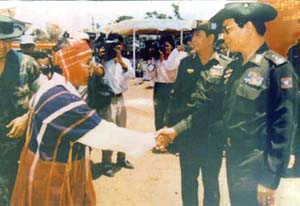
Picture 42: Militarism describes an army pursuing its
conventional role with much vigor; militarization
describes the pursuit and capture of all society
|
Forced labor also reveals
militarization. Like tax, public works such as building
and maintaining roads, dams and canals are routine state
functions. When critics attack forced labor, Burma’s
government objects to a foreign misread of unique and
necessary national traditions. However, regardless of
whether forced labor is customary or necessary, people
resent the danger and economic burden it creates,
particularly food scarcity. The evidence shows people not
opposed to the public works projects per se, or
even to donating their labor, but to the military’s
management approach. Rural traditions like collective
farming exemplify that labor could be arranged in other
ways. Once again, routine administration does not require
military excess. Yet it is overwhelmed by military
authoritarianism, and suffers because of it. |
 Militarization of Agriculture Militarization of Agriculture 
Burma is an agrarian society. Farming is
not just an occupation, but a way of life. Conceivably, high
taxes and unpaid labor might constrict agrarian living
without threatening the foundation of subsistence
agriculture: fertile land and productive work. Yet there has
been a militarization of agricul-ture through continuous
preference for military priorities over farmers’ needs.
| The Tribunal finds that buying
paddy, building dams, increasing production and
selling rice on the world market all put military
interests above food security. On one hand, these
imply development and open-market reform. On the
other hand, the hand of reality, they have been a
human rights disaster. These policies would not be so
uniformly terrible if planned and carried out
democratically. The essential problem is that
militarization simultaneously depends on farmers and
negates their way of life. |
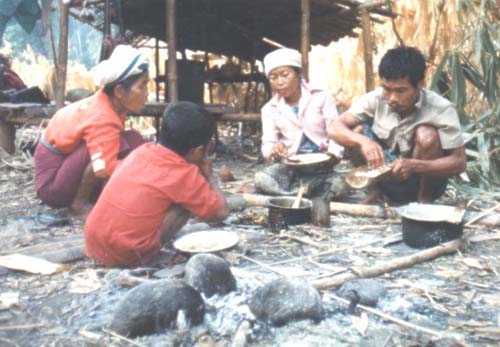
Picture 43: "People are only thinking of how to
get a little food to fill their stomachs."
|
The government correctly identifies
agriculture as Burma’s economic foundation, and formally
specifies development as a national objective.7 Officially, the government’s Four Economic
Objectives are
- Development
of agriculture as the base and all-round development
of other sectors of the economy as well
- Proper
evolution of the market-oriented economy
- Development
of the economy inviting participation in terms of
technical know-how and investments from sources
inside the country and abroad
- The
initiative to shape the national economy must be kept
in the hands of the State and the national peoples
Furthermore, promoting rice cultivation
makes sense as economic policy, ensuring a homegrown staple
diet. The problem is that various development schemes and
policies never challenge the assumption that Burma needs to
recruit, feed and equip a huge army. This army’s simple
existence strains the rural economy: recruiting farmers to be
soldiers; feeding them with other farmers’ rice; and
buying materiel with rice export. Agriculture has become the
basis for military buildup. Controlling and exploiting
agricultural production have therefore become military goals.
The military pursues these goals in a spirit of conquest and
militarism.
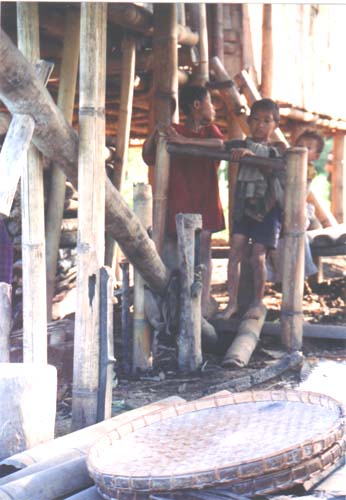
Picture 44: Promoting rice cultivation makes sense as
economic policy, ensuring a homegrown staple diet
|
This is militarization, not mere
militarism, for two reasons. First, it is a thorough,
systematic and nationwide orientation towards
military control of agriculture, replete with
violence, intimidation and military fanfare. Second,
and perhaps more telling, is that military structure
and ideology take over government, abrogating
farmers’ self-sufficient way of life. This was
clear with the Ngamoeyeik dam, where the
government’s hierarchy meddled with
farmers’ expert knowledge of land and water,
resulting in flood, drought and farmers simply giving
up. When the people complained, "What are you
doing? We can’t even live here anymore!"
officials replied that they didn’t know, they
were just following orders. It was nearly impossible
for farmers to participate in decisions about
agriculture. Militarization’s
values—buildup of the armed forces, hierarchy,
and blind obedience—seem incompatible with
agrarian living. |
 Military in the Media Military in the Media 
Food scarcity also suggests militarization
through government’s control of state media. Again, it
is necessary to distinguish simple militarism, which
might use mass communication to honor or celebrate the armed
forces, from militarization, in which propaganda goes
a step further, promoting military attitudes and priorities.
Militarism depicts the army’s forceful presence;
militarization prepares the whole society to think and feel
like soldiers going into battle. Mainstream opinion is made
to reflect goals normally confined to the army.
| Every day the state reiterates
these goals, which are printed in newspapers,
announced on television and repeated at public
events. Apart from the Four Political, Four Economic
and Four Social Objectives of the State is the
People’s Desire, a propaganda campaign begun in
1996. The sum of these slogans is supposed to
represent the common will. The People’s Desire
comprises four commitments to safeguarding the
nation: 8 |
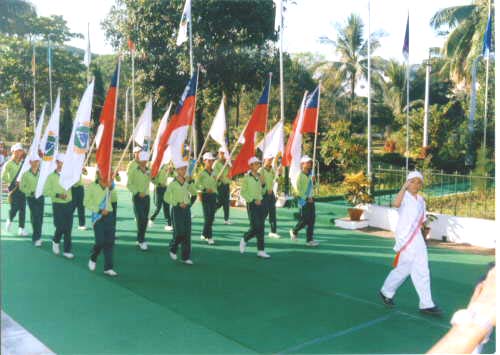
Picture 45: Militarization prepares the whole society
to think and feel like soldiers going into battle.
|
- Oppose those
relying on external elements, acting as stooges,
holding negative views.
- Oppose those
trying to jeopardize stability of the State and
progress of the nation.
- Oppose
foreign nations interfering in internal affairs of
the State.
- Crush all
internal and external destructive elements as the
common enemy.
| The government claimed these
statements to be the product of mass meetings
featuring speeches, patriotic oaths and unanimous
ratification of the People’s Desire. As army
propaganda, there is nothing remarkable here. All
militaries are assigned to protect the State. The
People’s Desire is remarkable because it is not
supposed to be military propaganda, but a summary of
civilian wishes. It embodies several ideas: that
civilians and the Tatmadaw are indivisible, that
what’s good for the army is good for the people,
and that true victory will come when the populace
truly adopts militant nationalism. Conspicuously
absent from these aims are political negotiation,
poverty eradication and similar "hearts and
minds" tactics. Food security, land rights,
health care and education, desires that some of
Burma’s people expressed to the Tribunal,
apparently have no place. |
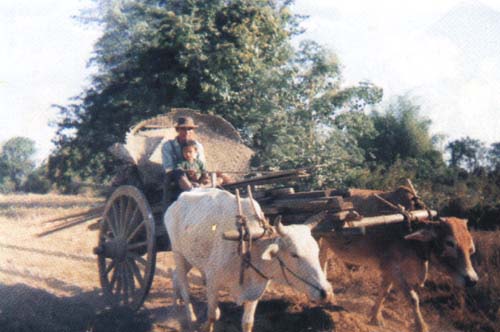
Picture 46: "We are the lucky ones, to be able
to leave."
|
State media further confuses the roles of
soldier and farmer by continuously reporting on military
officials’ input to agriculture. Inspecting fields,
checking irrigation ditches, making speeches to farmers,
reviewing machinery and "leaving necessary
instructions" wherever officials go—all are public
acts which reinforce the message of army leadership in rural
life.
If standard propaganda featuring military
speeches and parades reveal militarism, then formulations
like the People’s Desire, which superimpose military
thinking on the whole population, reveal militarization.
 Popular Opinion Popular Opinion 
We found the last indicator of
militarization to be witness statements. Witnesses repeatedly
expressed that Burma is dominated by military, and that
rights and freedoms they wish for are therefore impossible.
People believe Burma is hopelessly militarized, and that
military influence forces them into misery. This viewpoint
was especially convincing in testimony from refugees, who
weren’t merely opining on politics, but explaining why
they left their homes, gave up their land and now live in
extreme poverty. The military’s predominance is real and
pervasive enough to affect people’s most important
economic and social decisions.
Such statements make three points. First is
the perception that military rule is a nationwide reality
with serious implications for everybody. The second is that
military rule is absolute, leaving no viable alternative
other than flight. Not a single witness expressed faith in
the justice system or even mentioned Burma’s courts.
Lastly, traditional values of rural society have collapsed:
the state has turned people against each other. It has
replaced trust and cooperation with desperate competition for
survival. All of these elements can be seen in Saw
Roman’s direct testimony to the Tribunal:
Many people have experienced far
greater suffering than us. We are the lucky ones, to be
able to leave. I consider Burma my home and my land, but
because of gross injustice and abuse, we are forced to
run away. We grew rice until this year. I even planted a
new crop, but we had to leave it all. If we harvested
early to pay for the journey people would have suspected.
So we lost everything. 9
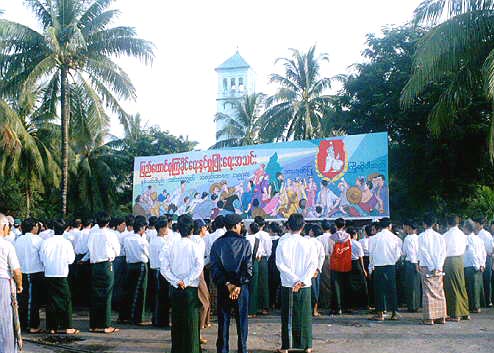
Picture 47: "Crush all internal and external
destructive elements as the common enemy."
|
Saw Roman’s family might have
survived another season; perhaps next year’s
quota will decrease; the neighbors may not be
informers after all. Speculation is immaterial,
because Saw Roman’s view of life in Burma has
been militarized. He is resigned to the supremacy of
the armed forces. Justified or not this resignation
is shared by many, and demonstrates
militarization’s advances on national psyche. |
| 1 |
 |
Ministry of Agriculture and
Irrigation, The National Report to CFS on the
Implementation of the World Food Summit Plan of Action
Until End 1997 (Union of Myanmar), The Government of
the Union of Myanmar, March 1998, p. 9. |
| 2 |
 |
The most comprehesive treatment of
forced labor in Burma is found in the International
Labour Organisation’s "Forced Labour in Myanmar
(Burma)." |
| 3 |
 |
Saw Nyi Nyi, "Burma Issues
internal report," 1997, p. 5. |
| 4 |
 |
See Shan Human Rights Foundation, Dispossessed:
Forced Relocation and Extrajudicial Killings in Shan
State, April 1998. |
| 5 |
 |
Second Strategic Command officer,
Colonel Aung Naing Tun, to a meeting of headmen at
Thandaung, Papun Township, Karen State, in 1995.
"Confidential Report to Burma Issues: Summary of
1995 offensive in Papun Township," 1997. |
| 6 |
 |
Mon Information Service, "Human
Rights Report 1/97: The Forced Purchasing of Paddy in Mon
State," May 1997, Report 1. |
| 7 |
 |
The Four Political Objectives
are
1) Stability of the State, community peace and
tranquillity, prevalence of law and order; 2) National
reconsolidation; 3) Emergence of a new and enduring State
Constitution; 4) Building of a new modern developed
nation in accord with the new State Constitution.
The Four Social Objectives are
1) Uplift of the morale and morality of the entire
nation; 2) Uplift of national prestige and integrity and
preservation and safeguarding of cultural heritage and
national character; 3) Uplift of dynamism of patriotic
spirit; 4) Uplift of health, fitness and education
standards of the entire nation. |
| 8 |
 |
As broadcast daily on TV Myanmar. |
| 9 |
 |
See Saw Roman’s deposition in Appendix 3. |
Return to Top
|